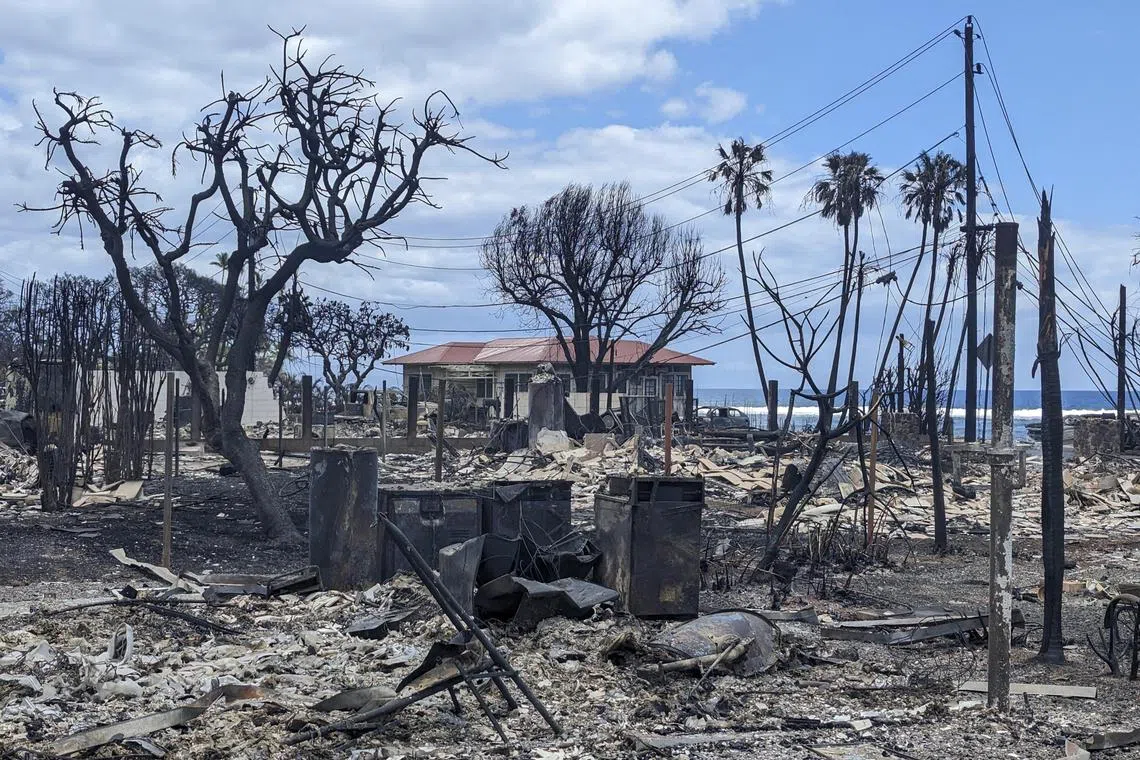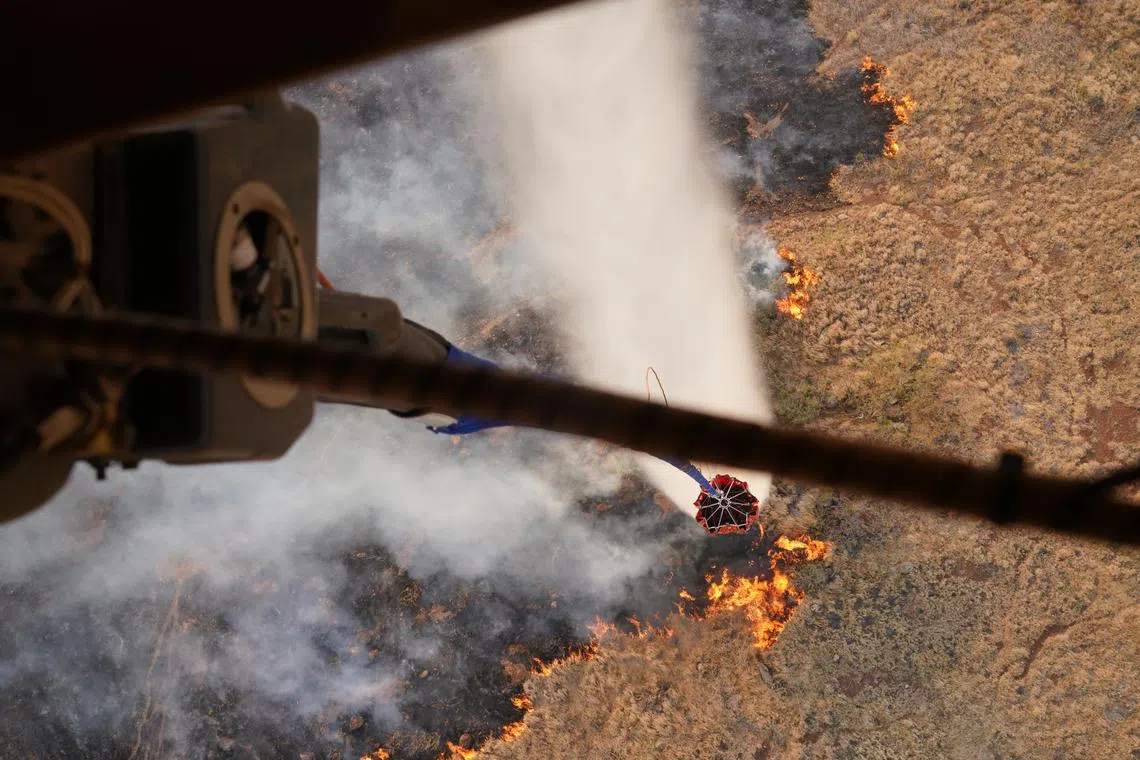How climate change turned lush Hawaii into a tinderbox
Sign up now: Get ST's newsletters delivered to your inbox

A neighborhood destroyed by wildfires in Lahaina, on the Hawaiian island of Maui, on Aug 9.
PHOTO: NYTIMES
Follow topic:
HAWAII - The fires in Hawaii
The explanation is as straightforward as it is sobering: As the planet heats up, no place is protected from disasters.
The story of this week’s blaze arguably began decades ago, when Hawaii started experiencing a long-term decline in average annual rainfall. Since 1990, rainfall at monitoring sites has been 31 per cent lower in the wet season and 6 per cent lower in the dry season, according to work published in 2015 by researchers at the University of Hawaii and the University of Colorado.
There are multiple reasons for that change, according to Dr Abby Frazier, a climatologist at Clark University who has researched Hawaii.
One factor is La Nina, which has usually led to significant rainfall but began delivering less precipitation beginning in the 1980s. Those weaker La Ninas “are not bringing us out of drought”, she said.
Another change: As temperatures increase, the clouds over Hawaii are thinner, Dr Frazier said. And less cloud cover means less precipitation. On top of that, big storms have been moving north over time – delivering less of the rainfallthat they typically bring to the islands.
All three changes are probably related to rising temperatures, she said.
Almost 16 per cent of Maui County, where the wildfires are burning, is in severe drought, according to data issued by the US Drought Monitor; an additional 20 per cent is in moderate drought.
As average annual rainfall has been decreasing, average temperatures in Hawaii, like elsewhere in the world, have increased, further drying out the vegetation.
In a paper published in 2019, University of Hawaii researchers wrote that 2016 was warmer than the 100-year mean by 0.92 deg C and temperatures had been inching up by 0.19 deg C per decade at the Mauna Loa Observatory.
Hawaii’s landscape is changing in other ways, beyond becoming drier. As wildfires become more common, some native vegetation, which is poorly adapted to fire, has been destroyed. In other places, sugar cane farms stopped operating around the 1990s and the land stopped getting irrigated.

Almost 16 per cent of Maui County, where the wildfires are burning, is in severe drought.
PHOTO: EPA-EFE
In place of those crops and native vegetation, dry and invasive grasses spread. Those grasses are better able to regrow after a fire, but are also quick to ignite. That has contributed to fires spreading more quickly.
“The landscape is covered with flammable stuff,” said Dr Ryan Longman, a research fellow at the East-West Centre, an educational institution. “All of the conditions just came together.”
The drying out of Hawaii’s landscape is part of a trend affecting rainforests around the world.
Rainforests are highly sensitive to changes in precipitation. Higher temperatures, drought and changes in rain patterns stress trees. Their trunks dry up and their leaves fall. Thinning canopy allows sun rays to reach the soil, causing it to dry up quickly.
Over decades, drought, heat, fire and deforestation can force a rainforest to transition into dry grasslands, or savanna.
Parts of the Amazon, the biggest rainforest in the world, are fast approaching this transition, a point of no return when the humid ecosystem would forever change.
Degraded forests and changing weather patterns combine to create perfect conditions for fires, often started by human activity, to grow into uncontrollable blazes. In tropical forests, tree loss because of fire has grown 5 per cent on average each year over the past 20 years.
Those underlying threats were amplified in Hawaii this week by a separate threat: Hurricane Dora, which passed south of Hawaii as a Category 4 storm on Tuesday. It contributed to wind speeds of greater than 97kmh, helping the fire to spread at a ferocious speed.
It is difficult to directly attribute any single hurricane to climate change. But by increasing air and ocean temperatures, warming conditions make it more likely for large storms to gain strength.
“The massive winds, dry winds, are what drove this fire,” said Mr Josh Stanbro, who served as chief resilience officer for Honolulu. “This is part of a long-term trend that is directly related to climate changes and impacts on the islands.” NYTIMES

